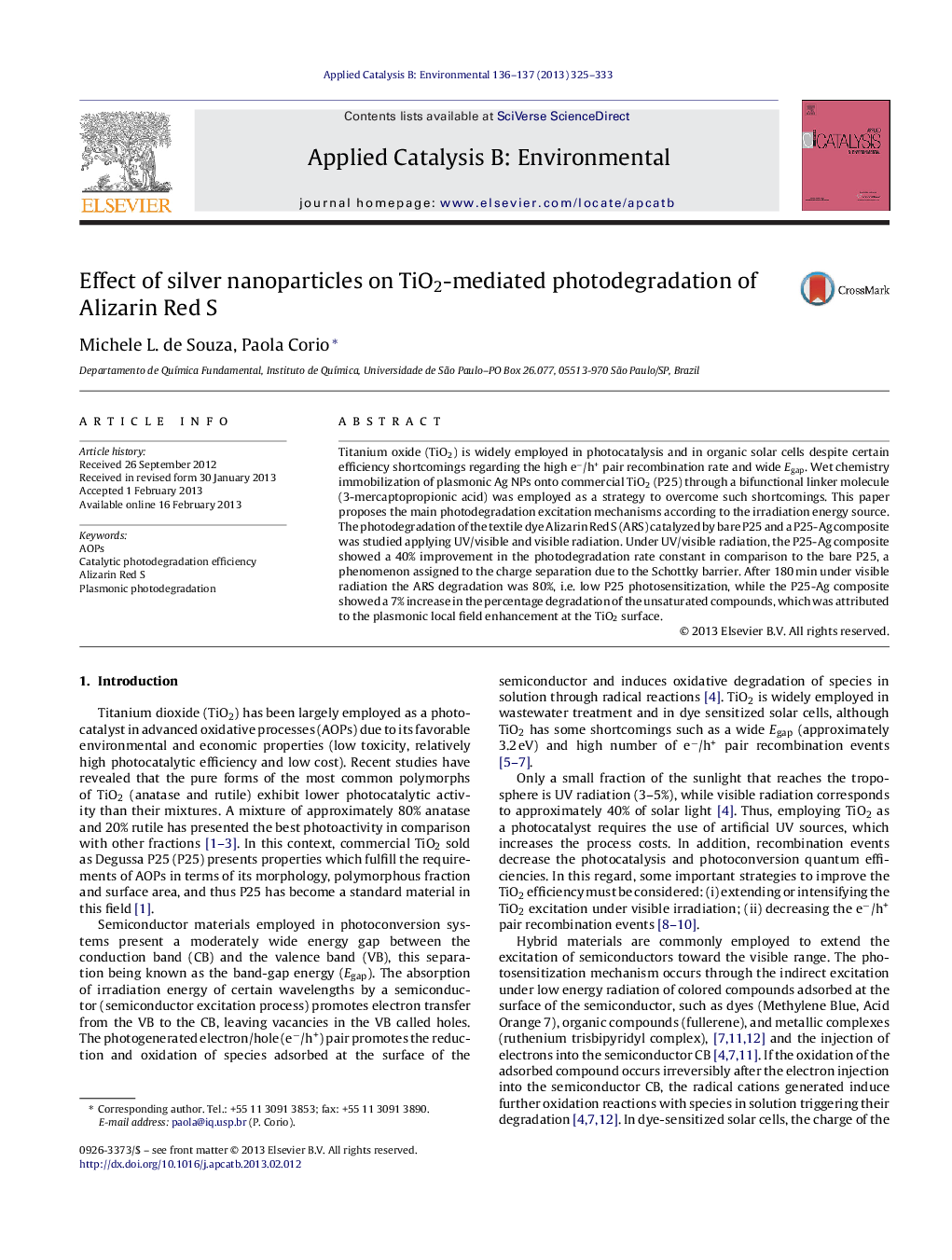| Article ID | Journal | Published Year | Pages | File Type |
|---|---|---|---|---|
| 46341 | Applied Catalysis B: Environmental | 2013 | 9 Pages |
Titanium oxide (TiO2) is widely employed in photocatalysis and in organic solar cells despite certain efficiency shortcomings regarding the high e−/h+ pair recombination rate and wide Egap. Wet chemistry immobilization of plasmonic Ag NPs onto commercial TiO2 (P25) through a bifunctional linker molecule (3-mercaptopropionic acid) was employed as a strategy to overcome such shortcomings. This paper proposes the main photodegradation excitation mechanisms according to the irradiation energy source. The photodegradation of the textile dye Alizarin Red S (ARS) catalyzed by bare P25 and a P25-Ag composite was studied applying UV/visible and visible radiation. Under UV/visible radiation, the P25-Ag composite showed a 40% improvement in the photodegradation rate constant in comparison to the bare P25, a phenomenon assigned to the charge separation due to the Schottky barrier. After 180 min under visible radiation the ARS degradation was 80%, i.e. low P25 photosensitization, while the P25-Ag composite showed a 7% increase in the percentage degradation of the unsaturated compounds, which was attributed to the plasmonic local field enhancement at the TiO2 surface.
Graphical abstractFigure optionsDownload full-size imageDownload as PowerPoint slideHighlights► A simple wet chemistry method for immobilization of Ag NPs on the P25 surface leading to a catalytic composite was performed. ► P25-Ag composite photocatalytic efficiency was observed under UV/visible and visible excitation photodegradation of ARS. ► Distinct mechanisms were identified according with the radiation source and the degradation stage. ► Phototensitization and plasmonic effects showed to be incremental on the P25-Ag composite.
